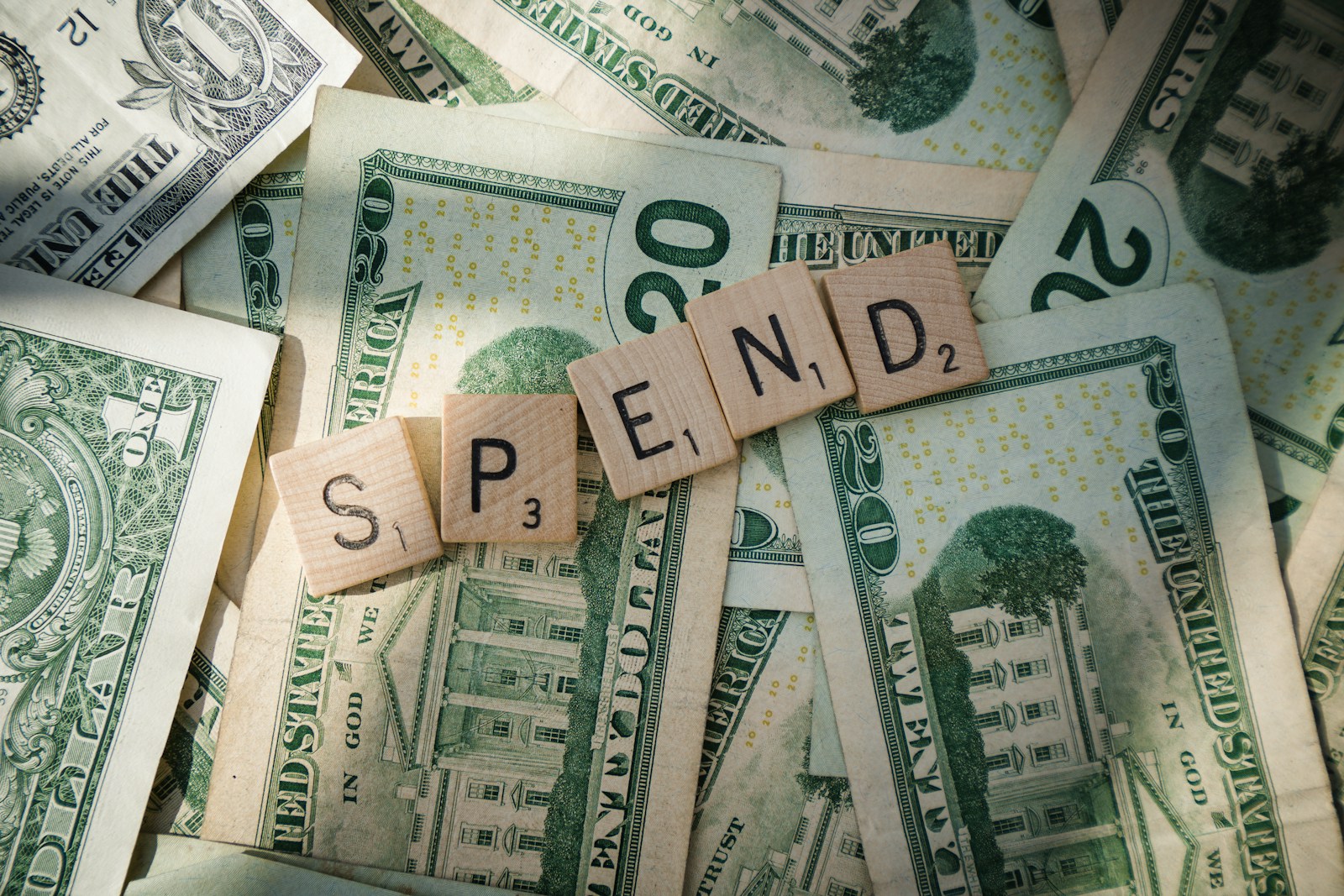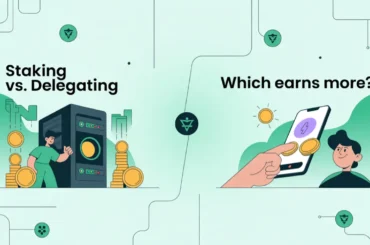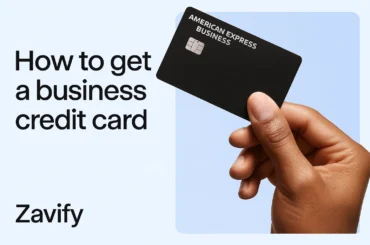I mean, come on folks. Does the end of the month bring out a slight feel of dread in you? When you check out your bank account balance and you ask yourself where the money went. You are not left out. Realizing this dream of accumulating a comfortable saving cushion in a world where prices are soaring all over and temptations are exploited at every step may seem an ever-escaping goal. You do not just get the money the hard way, you want to see more left in your hands to work for your future.
However, as I would tell you, it is not about making painful sacrifices to save a little bit extra. It’s does not mean to eat ramen noodles and never get another latte. It does not depend on whether one is smart, or planning and take action on how to manage his/her finances. It is more of being smart than hard work with your cash.
This year it can be other. With this being your year, you can be the one in charge, no longer living hand to mouth, but start generating real and physical wealth. Now imagine how good it will feel to know that you have an emergency fund that would take care of whatever life throws at you. Imagine the joy of seeing your dreams come true be it a down payment on a house or a trip circumnavigating the world or just the ability to work on a side idea or case project. It is not a book that provides a short list of tips that you could follow but rather a plan of a financial change in your life.
We are going to look at five great, practical, and oddly easy solutions to save more money and there will be no generic tips as we go into solutions that create a permanent difference. Be prepared to retrain your financial mind and experience the unbelievable ability of seeing yourself as a control maker instead of dealing with managing your finances.
The Foundational Mindset: Shifting from Scarcity to Strategy
There has to be a bit of specifics, apps, accounts, but prior to executing that we need to discuss the six inches between your ears. The attitude of your mind is the most powerful influence you can ever use in finances. Money is all about scarcity and anxiety to many of us. We to ourselves say, “I have not enough to save.” The trick is to turn that in 180 degrees. The best of all the means of saving more money starts mentally; namely, a change in thinking, a change in frame of mind: that of scarcity to strategy and abundance.
Rather than considering that saving is like some punishment or that which is left behind after all your expenditure, you should consider it as the initial and most important bill. This is the Pay Yourself First philosophy, a complete game changer. Just think: you pay the landlord, you pay the utility company, you pay the internet provider, and you are happy to do that. How come you should not treat your future self with the same priority? It is not only a witty slogan, but a radical re-framing. Saving will be a non-negotiable pro-active component of your financial plan rather than a post hoc being. Such a strategic direction converts saving into something of a self-investment as opposed to an arduous task. This very idea is a starting point because after embracing it, every other method of saving more money can become even much more effective and sustainable.
Strategy #1: Automate Your Savings and Obliterate Temptation
What can you say, you have adopted the Pay Yourself First philosophy. Now what? Automation is the smoothest and strongest approach to the implementation of this. Reserve of willpower is not unlimited. There is nothing wrong with relying on yourself to remember to transfer some money manually to your savings account at every payday, but it is guaranteed to fail in the long run. Things become hectic, emergencies occur, and this “I will do this later” can go as far as to be replaced by “I will do this next month”. Automatic savings does not allow willpower to do itself.
How to Set Up Automatic Transfers
This is arguably one of the most impactful ways to save more money with the least amount of ongoing effort. Here’s how simple it is:
- Log into your primary checking account’s online banking portal. This is the account where your paycheck is deposited.
- Navigate to the “Transfers” section. Look for an option that says “Automatic Transfers,” “Recurring Transfers,” or “Scheduled Transfers.”
- Set up a new transfer. You’ll need to specify a few things:
- From Account: Your checking account.
- To Account: Your savings account (we’ll talk more about which type in a moment).
- Amount: Decide on a realistic amount to start. Even $25 or $50 per paycheck is a fantastic start! You can always increase it later.
- Frequency: Set the transfer to occur the same day you get paid, or the day after. If you get paid bi-weekly, set up a bi-weekly transfer. If you get paid monthly, set it up monthly.
- Confirm and Save. That’s it. You’ve just created a system that saves money for you without you having to lift a finger. It’s one of the most brilliant and effortless ways to save more money available today.
The “Out of Sight, Out of Mind” Principle
To have a supercharged automation strategy, there must be a place where the money is put such that you cannot access it and be tempted to spend some of it. This is the point where the principle of out of sight out of mind comes into picture. When you are transferring the money to one of those savings accounts and it is joint with your regular checking account, it is all too tempting to check that balance and figure in your mind that you have the money sitting in there to use, and put it back when you need to spend.
The solution? A High-Yield Savings Account (HYSA), preferably at a different bank than your primary checking account.
- What is an HYSA? An HYSA is a class of savings account with a much higher interest rate than the national average on other savings accounts (normal one). We are referring to 10, 20 or even 50 times the interest. This translates that your money is not lying idle but actively multiplying itself and generating more money to you.
- Why a different bank? You develop a positive friction by opening an HYSA with a different bank that is online only. Withdrawal and transfer of money that is in that account to your checking account usually takes one to three days. That interval is usually the only way you need to think over an impulsive buy. Your money does not get locked up indefinitely and has to go through some time delay, so that whenever you spend some money, you or I have to become more deliberate. It is a very important psychological trick and one of the most clever tricks to put some more money towards long term goals.
Strategy #2: The Ultimate Budgeting Blueprint for Real People
I hear you, I hear you. Everytime you hear the term budget, you start thinking about elaborate spreadsheets, sore tracking numbers and denying everything that is fun. Or what would happen in the event we re-branded it? Budget is not a financial bondage; it is a mote of how we spend. It is an instrument that allows you to spend freely without guilt as you are well aware of how it is being spent and as your goal areas are secured. It is almost impossible to find the ways of saving your money in a more efficient way before you know where you spend your money.

Ditching the Drab Spreadsheet: Modern Budgeting Apps
You will never take up manual data entry. Due to the current technology, budgeting has become so easy to understand. This is possible to count unlimited applications that safely connect to your bank accounts and credit cards and automatically organize your transactions. It’s also possible with a single look to find out how you have spent your money on groceries, gas, entertainment, and subscriptions. It is not only tracking but awareness. You may be surprised by the cost of the lattes or take out lunches you have everyday. It is a preliminary step in transformation and one of the most enlightening experiences in managing to save more funds. To get a complete analysis of your financial wellbeing, seek out apps such as the ones that provide bill reminders, savings goals, etc., and customizable spending categories.
The 50/30/20 Rule: A Simple Framework for Success
This is an outstanding initiation procedure in the event of individuals who feel zapped by the process of category-by-category budgeting. It can be a basic way to budget your after-tax earnings that is quite simple and percentage based, not too constrained and giving some meaning.
- 50% for Needs: This half of your money coming in should be dedicated to your pure necessities. This is in the form of housing (rent/mortgage), utilities, food, commute to work and minimum payment on debt. These are the things you have to pay to live.
- 30% for Wants: This is the fun category! It includes all you use your money on that cannot be described as an essential. Consider eating out, buying clothes, recreational activities, online streaming, traveling, and entertainment. This structure directly allows you to have a good time in your life.
- 20% for Savings & Debt Repayment: The golden goose. Quite 20 percent of your income will be spent on the creation of your future. This involves creating your emergency fund, preparing upon retirement, and having an investment and making additional payments on high interest-bearing debt (such as credit cards or personal loans). One of the strongest and effective methods to save more money and boost your financial plans is by following this 20 percent mark.
Customizing Your Budget: Making it Work for You
Keep in mind that the 50/30/20 rule has been a rule of thumb and not in stone. It is an awesome framework but the true strength of its flexibility. When you are in a high-cost-of-living location, your Needs may tend to go as high as 60 percent. That’s okay! You may have to make adjustments on your Wants of 20 percent to adjust. On the other hand, when you have a very specific and large savings objective such as a house deposit in mind, you may decide to reduce your Wants to 15 percent and increased your Savings to 35 percent. It helps to be purposeful.
Make the framework your starting point and then monitor your spending during a month or two, then modify the percentages to best fit your personal priorities. That is why budgeting is a sustainable tool, and one of the most personal opportunities to save additional money.
Strategy #3: Master the Art of Conscious Spending
Much of our money does not go towards large expenditures, carefully considered purchases but rather in a collection of small, brainless buys. That is why it is mastering the concept of conscious spending. It is all about transforming oneself through making an active to purposeful choice. This is not about deprivation, it is about having what you are spending support your values and your goals. The application of conscious spending patterns is among the most effective means of saving more money since it addresses the daily drain of funds.

The “30-Day Rule” for Impulse Purchases
The arch-antagonist to any savings plan is the impulse buying. You see something on the internet, you feel a hit of adrenalin and you press buy now, and the buyer hydrogenic effect kicks in later. Your guard against this is the 30-Day Rule.
This is the rule: you do not buy any purchase you do not really need above a certain amount (you settle the point; we suggest a limit of 50 or 100 dollars). Rather, you paper or put it into a wishlist and gave it a 30-day waiting period. And once it is 30 days old and you still desire to acquire it and have money for it in your Wants budget then you can acquire it. The thing is that the initial urge will most of the time have died off. You will learn that you did not actually need it. This is the least simple thing a person can do and spare a precious cooling-off time to avoid emotional spending and save hundreds, or even thousands of dollars annually. It is one of the best ways of saving more money without doing anything but increasing time and patience.
Uncovering Your “Money Leaks”: The Subscription Audit
With the subscription economy, you can only imagine how simple it is to set up free trials and to forget to cancel. The way these money leaks work out is in streaming services, productivity software, subscription boxes, and gym memberships you never go to. They are small, but reconnection-charges that inexorably drain your bank account month after month.
A full subscription audit will take you an hour at the weekend. Analyze your bank and credit card statements of the last three months and list out each and every recurring charge. Then kill mercilessly. Ask yourself of each one:
- Do I have a regular habit of using this?
- Is it valuable to me or does it make me happy?
- Can this service be free or can I spend a little less on it?
Drop all the stuff that fails to pass the cut. What you will find is, you are sure to be surprised. All you have to do is to cancel 2-3 of the subscriptions you never use to save yourself at least 30, 50 or more dollars each month. It is one of the fastest and most gratifying to saving greater amount of money with immediate effect.
Savvy Shopping Secrets: From Cash-Back Apps to Discount Codes
Conscious spending also implies being wiser when it comes to the purchases you are making despite having to do it. There is no need to pay the full price without being obliged. Search any discount codes prior to making any purchase on the internet. Install extensions such as Honey or Capital One Shopping which automatically looks behind the scenes on the web to find coupons on checking out. There are cash-back apps such as Rakuten or Ibotta where you can receive a percentage of the money you spent on daily purchases. When applied regularly these tools can save you a lot of money at the end of the year. It is kind of a tiny deposit on the life, and it is one of the smartest ways to save more money on things you would have to buy anyway.
Strategy #4: Negotiate Your Bills and Slash Fixed Costs
A lot of citizens believe that their monthly expenses are unchangeable. Your rent, your cable bill, your car insurance- and you get the bill and you pay it. However such expenses are in most cases negotiable. Companies will prefer to offer a small discount to you other than lose your business completely. Investing a few hours trying to make some phone calls can save the company a fortune and this is one way into saving more money on an annual basis.

Why You Should Never Accept the First Price
Even such things as the introductory rates at companies in competitive sectors such as telecommunications (internet, cable, mobile phones) and insurance are pretty common. Old, loyal clients usually pay higher costs on the long-term scale. Their business is based on your laziness because they wager that you are not going to pick up the phone to call and request a lower price. Just calling them up by telephone is a way of you challenging that assumption.
A Simple Script for Negotiating Your Bills
The thought of haggling can be intimidating, but it doesn’t have to be. The key is to be polite, prepared, and persistent. Here’s a simple script you can adapt:
- Be Prepared: Before you call, do your research. See what competitors are offering for a similar service. Have your current bill in front of you.
- Get to the Right Department: When you call, ask to be transferred to the “retention department” or “customer loyalty” department. These are the people who are authorized to offer discounts.
- The Script:
- “Hello, my name is [Your Name] and I’ve been a loyal customer for [Number] years. My latest bill seems higher than I’d like, and I’m exploring my options to lower my monthly expenses.”
- “I’ve seen that [Competitor Company] is offering a similar plan for [Price]. I would really prefer to stay with you, but my budget is tight right now. Is there any way you can help me get a more competitive rate or apply any available promotions to my account?”
- Be Patient and Polite: The agent may initially say no. Remain friendly. You can say something like, “I understand. Is there anything else at all you can do? Even a small discount would make a big difference for me.”
Even if you only save $20 a month on your cable bill and $15 on your phone bill, that’s $420 in your pocket over a year. This is one of the most underrated ways to save more money, and it only costs you a bit of your time.
Strategy #5: Boost Your Income with a Smart Side Hustle
Up to now we have been dealing with how to spend and save better. However, the financial equation has two sides, expenditure and income. When you already have trimmed down to the bare extent and still feel that you are not making any progress, you should consider looking at the other end of the picture, the income side. It is great to scrimp here and there, but it is even better to find more ways to get more money.
Why Earning More is the Ultimate Savings Hack
You can only cut so much on your budget. There is only so much you can cut down on your expenses before your standards of living are affected. But there is a theoretical open-ended cap of how much you can earn. Any additional dollar earned through a side hustle can be used to target your savings and debt repayment targets, providing a massive reduction into the time you require to reach these targets. Suppose you want to save 10 grand, working a side job and earning an additional 500 a month takes you 20 months to reach 10 grand, but saving the money on your current budget may take years.
Finding a Side Hustle That Fits Your Life
The secret of a successful side hustle is to decide on something, which suits your skills, interests, and time. Never do something you despise because you love the money because you will soon burn out.
- Leverage Your Skills: Are you a great writer? Offer freelance content writing or editing services. Are you a graphic designer? Pick up projects on platforms like Upwork or Fiverr. Are you bilingual? Offer translation services.
- Use Your Assets: Do you have a car that can be depended on? Register with a ride-sharing or food delivery company, which has flexible working hours. Do you own a guest room? Think of making it available at Airbnb.
- Share Your Knowledge: Do you know a lot about a certain topic, such as math, music or a foreign language? Provide tutoring either over the web or in your community.
- The Gig Economy: Find out assignments on sites such as TaskRabbit to do jobs such as handyman things, moving services or errands.
The second most proactive and empowering option to save more money is to start a side hustle since you will actually be generating new sources of revenue instead of merely controlling the sources that you already have.
Conclusion: Your Journey to Financial Freedom Starts Now
The ability to save more money is not an obscure code that the rich have kept to themselves, it is a skill that can be learnt and perfected by anyone. We have examined that the best opportunities to save more money are an effective combination of psychological changes and practical methods. It starts with the proactive attitude by always paying yourself as the highest priority. Then it becomes easy to ensure that you automate your savings using technology.
Having a realistic budget or spending plan gives you the insight and control on how to use your money where you want it to be. With the conscious spending down you can seal the financial leaks of the impulse purchases and subscriptions you forgot about and taking the initiative to negotiate your bills can save you hundreds of dollars a year. Lastly, a side hustle will be the best fuel to give you a quick boost to a financial freedom journey.
Do not get carried away with a desire to put everything to effect immediately. Changing things: the most important is starting small. This week, concentrate on one of these five strategies. Perhaps it is making that single automatic transfer. Maybe, it is dropping two subscriptions. Or is it that single phone call to your internet company. Momentum and the resulting strong habits are achieved through small, regular steps. The tools are available to you. You are now equipped with the roadmap. It is your first step toward fulfilling the life you want to have, financially and personally.
Frequently Asked Questions About Saving More Money
Q1: How can I save money if I live paycheck to paycheck?
It is a challenging and ordinary scenario. The trick is to begin with something so small in order to kick start it. Start by monitoring your finances in a month with the help of an app to understand that every dollar is being spent where. You will probably discover you have little “leaks” you can seal (i.e. a subscription you had forgotten, coffee every day). Then, see what it will take to automate a small amount into savings, even as little as $5 per week. The amount is not so important at the beginning of the process of building the habit. This coupled with an attempt to combine one bill (i.e. your phone or cable) into one can save a slight bit of cash flow to get you started.
Q2: What’s the fastest way to save $1,000?
The quickest route is usually a mixture of slash and burn short term, and a jump in revenue. Spend a month on a spending freeze of everything non-essential (no going out, no shopping, no entertainment). At the same time find a temporary side job. You can spend a couple of weekends on food delivery, some of the unneeded things around your home on Facebook Marketplace, or a couple of additional shifts in case you have time. This two pronged attack of totally cutting down expenditure and escalating earnings is the shortest way forward to achieving a prompt savings target.
Q3: Is it better to pay off debt or save money?
This is the old financial dilemma. Mathematical response is commonly influenced by the interest rates. In case you carry debt with a high interest rate (such as 20%+ APR credit cards), you are certainly paying a much higher interest rate than you would receive in a savings account. In this instance, there is a sure thing of bringing down the debt by all means. Nonetheless, it is important to save a small emergency fund (500-1000 dollars) at first. In absence of this cushion, you will be back in debt due to any unforeseen cost. One of the most popular methods is to create an emergency fund and then as quickly as possible pay off the high interest debt, whilst paying a small amount into long term savings.
Q4: How much of my income should I be saving?
There is a common measure known as the 50/30/20 rule, which recommends that your after-tax income should be divided into 50 percent spending and 20 percent saving. This 20 percent will involve retirement savings, savings and growing your cash savings. This is however a guideline. You may want a higher percentage if you have high-interest debt or are a high-saving person with high savings goals. When you are just getting started or you are on a lower income, just going to 5 percent or 10 percent is a big success. The main thing is that it is all about consistency and over time as your income increases, you increase savings rate.
Q5: Are savings and budgeting apps safe to use?
Trusted financial applications borrow the same security and encryption that is implemented in banks to secure your data. In selection of an app, select those that are older and with positive reviews, and those that are open in terms of security. The majority of popular apps will implement services such as Plaid to connect to your bank accounts in a safe and read-only fashion, so they will be able to see your transactions but will not be able to transfer your funds or otherwise manipulate your account. Never trust blindly and always go by research and select a well-established provider.









